Learn more about the WHO’s drive toward a lower sodium lifestyle by 2025.
Key Takeaways:
- Excessive global sodium intake is killing millions annually
- The WHO aims to reduce worldwide sodium consumption by 30%
- Many food groups now face stricter sodium benchmarks driven by international data
- MicroSalt® can help food manufacturers comply with these new limits
Many global health organizations are giving increased attention to how much sodium the public consumes. Here in America, the USDA is taking positive steps to tackle excessive sodium in schools while the FDA’s 2021 Guidelines for Industry aims to make food manufacturers play a more responsible role in how much sodium goes into their products.
The World Health Organization (WHO) is also hard at work setting healthier sodium benchmarks. Manufacturers must be aware of these and their implications on the food production industry. That awareness will help companies stay compliant with the international expectations of governing bodies and consumers alike. This guide will cover the latest low-sodium benchmarks from the WHO and how food manufacturers can achieve them more easily.
What’s driving the WHO’s sodium stance?
People are consuming far too much salt globally – an average of 4 to 7 grams more than the WHO’s recommended daily intake of less than 5 grams (just under a teaspoon and less than 2 grams of sodium). Americans’ average daily consumption is also over the recommended daily limit of 2300 mg. The result is a high rate of hypertension, heart disease, heart attacks, and stroke that contribute to an estimated 2.5 million preventable deaths every year.
The WHO aims to make 5 grams of salt the daily maximum for everyone in the world by 2025. This will create a healthier population and reduce the massive financial strain put on national economies by excessive salt and sodium’s related health effects.
Establishing a 5 grams-per-day limit equates to a reduction in global sodium intake of 30%. Achieving such far-reaching goals in only a few years will require a significant manufacturing shift across many different food categories.
The WHO low-sodium benchmarks for various food products
Everything from cookies and pastries to sodas and savory snacks have come under the WHO’s review, with the majority of product groups receiving a recommended sodium content in mg per 100 grams. These recommended figures were set through a collaboration of international health experts, health departments, and other organizations who submitted data for analysis while working with the WHO.
The resulting recommendations will impact almost every food manufacturer. Here is how some of America’s favorite foodstuffs will be affected by the new sodium benchmarks:
- Pizzas: Americans eat 3 billion pizzas (or 23 pounds per person) every year, accounting for one-third of global consumption with the USDA estimating that a further 1 billion frozen pizzas are sold. As many as 13% of people make pizza a daily food, with children preferring it over all other food groups. This makes reducing pizza sodium a priority. All related manufacturers must meet the new WHO benchmark of 450 mg per 100 grams.
- Tinned and other ready-to-serve soups: These are among the world’s most popular but highly processed and sodium-heavy foods, driving a global market worth billions with demand set only to increase. The global sodium benchmark for soups can’t become a reality too soon and is now set at 235 mg per 100 grams.
- Bread: The average American consumes 53 pounds of bread a year. This is a troubling statistic when a single slice can contain between 100 and 200 mg of sodium. The new WHO benchmark for bread is 310 mg per 100 grams.
- Breakfast cereals: Once again, the United States accounts for a third of global consumption of this notoriously high-sodium food, closely followed by Europe, Asia, and Africa. The WHO splits breakfast cereals into minimally or highly processed categories with new low-sodium benchmarks of 100 mg and 280 mg per 100 grams, respectively.
- Chips: This category includes chips of every kind made from potatoes, vegetables, or grains. Potato chips alone contribute to an estimated global market of more than $33 billion, which is projected to exceed $40 billion by 2026. The WHO’s sodium benchmark for this international favorite is among the highest suggested at 500 mg per 100 grams.
Food manufacturers and interested stakeholders should review the WHO’s Global Sodium Benchmarks in their entirety to learn more about how many foodstuffs face new guidelines and what their sodium limit should be.
The future of salt for processed, packaged, and prepared products
The good work of the WHO and other health organizations isn’t being forced on an unwilling global public. The majority of Americans, for example (75%), want food with lower sodium content, and more than 50% want more direct control over the level of sodium they consume. Food manufacturers who provide low-sodium food options will be at the forefront of a worldwide sea change in legislation and consumer demand.
MicroSalt® can play a key role in helping food manufacturers keep everyone happy because it delivers the same flavor as standard salt but contains only half the sodium. Adding this all-natural, patented particle to your current operation requires no adjustments to existing food production processes or machinery. MicroSalt® is tailor-made for dry topical applications but can work effectively in foods of all kinds.
MicroSalt® contains no substitutes, and the fast-dissolving matrix doesn’t deliver the bitter aftertaste that many other salt substitutes leave behind. It’s easy to see how choosing the world’s smallest grain of salt can have a huge positive impact on a company’s social responsibility and odds of maintaining a healthy market share.
Contact MicroSalt® today with any questions
We’re dedicated to reassuring food manufacturers and consumers that good health and great taste can really coexist. We’d love to tell you more about how MicroSalt® can help businesses create healthier and internationally compliant products without compromising on flavor. Simply contact us via our message page call 1-877-825-0655 for more information.




